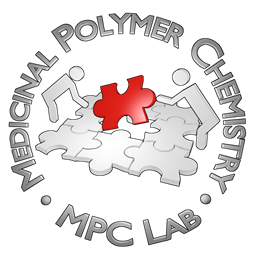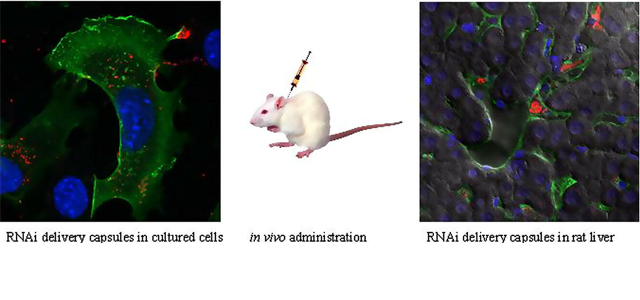MPCL has contributed to research on polymer hydrogel capsules for hepatic delivery of therapeutics. The results obtained by researchers from CSIRO in Australia have recently been published in “Acta Biomaterialia“.
Abstract
A key phase in the development of intelligently designed nanoparticle delivery vehicles for new therapeutic agents is to gain an understanding of their interaction with tissues and cells. We report a series of in vitro and in vivo experiments aimed at tracking a potential delivery vehicle for therapeutic agents, including vaccine peptides and drugs derived from poly(methacrylic acid) hydrogel capsules in certain organs and cell types. For the in vitro studies, two immortal liver-derived cell lines (Huh7 and Hepa1-6) and primary cultures of mouse hepatocytes were incubated with Alexa 647 labelled fluorescent capsules to track their internalization and intracellular distribution by confocal microscopy. Capsules, 500 nm in diameter, were taken up into the cells in a time-dependent manner in all three cell lines. Capsules were observed in plasma membrane-derived vesicles within the cells. After 24 h a significant proportion of the capsules was observed in lysosomes. To understand the behaviour of the capsules in vivo, Alexa 488 labelled fluorescent capsules were intravenously injected into Sprague–Dawley rats and after 24 h the fate of the capsules in a number of organs was determined by flow cytometry and confocal microscopy. By flow cytometry, the majority of the capsules were detected in the spleen whilst similar numbers were found in the lung and liver. By confocal microscopy, the majority of the capsules were found in the liver and spleen with significantly less capsules in the lung, heart and kidney. Colocalization of capsules with cell-type specific markers indicated that in lung, heart and kidney, the majority of the capsules were located in endothelial cells. In the spleen ∼50% of the capsules were found in CD163-positive cells, whereas in the liver, almost all capsules were located in CD163-positive cells, indicating uptake by Kupffer cells. Electron microscopy confirmed the presence of capsules within Kupffer cells.

